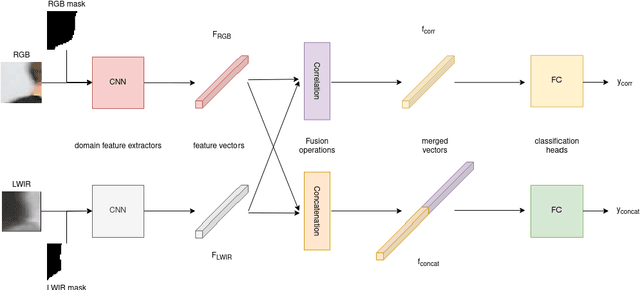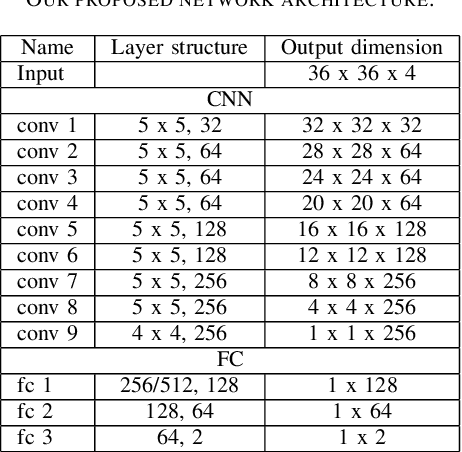Philippe Duplessis-Guindon
VisiTherS: Visible-thermal infrared stereo disparity estimation of human silhouette
Apr 22, 2023Abstract:This paper presents a novel approach for visible-thermal infrared stereoscopy, focusing on the estimation of disparities of human silhouettes. Visible-thermal infrared stereo poses several challenges, including occlusions and differently textured matching regions in both spectra. Finding matches between two spectra with varying colors, textures, and shapes adds further complexity to the task. To address the aforementioned challenges, this paper proposes a novel approach where a high-resolution convolutional neural network is used to better capture relationships between the two spectra. To do so, a modified HRNet backbone is used for feature extraction. This HRNet backbone is capable of capturing fine details and textures as it extracts features at multiple scales, thereby enabling the utilization of both local and global information. For matching visible and thermal infrared regions, our method extracts features on each patch using two modified HRNet streams. Features from the two streams are then combined for predicting the disparities by concatenation and correlation. Results on public datasets demonstrate the effectiveness of the proposed approach by improving the results by approximately 18 percentage points on the $\leq$ 1 pixel error, highlighting its potential for improving accuracy in this task. The code of VisiTherS is available on GitHub at the following link https://github.com/philippeDG/VisiTherS.
4D-MultispectralNet: Multispectral Stereoscopic Disparity Estimation using Human Masks
Apr 19, 2022



Abstract:Multispectral stereoscopy is an emerging field. A lot of work has been done in classical stereoscopy, but multispectral stereoscopy is not studied as frequently. This type of stereoscopy can be used in autonomous vehicles to complete the information given by RGB cameras. It helps to identify objects in the surroundings when the conditions are more difficult, such as in night scenes. This paper focuses on the RGB-LWIR spectrum. RGB-LWIR stereoscopy has the same challenges as classical stereoscopy, that is occlusions, textureless surfaces and repetitive patterns, plus specific ones related to the different modalities. Finding matches between two spectrums adds another layer of complexity. Color, texture and shapes are more likely to vary from a spectrum to another. To address this additional challenge, this paper focuses on estimating the disparity of people present in a scene. Given the fact that people's shape is captured in both RGB and LWIR, we propose a novel method that uses segmentation masks of the human in both spectrum and than concatenate them to the original images before the first layer of a Siamese Network. This method helps to improve the accuracy, particularly within the one pixel error range.
 Add to Chrome
Add to Chrome Add to Firefox
Add to Firefox Add to Edge
Add to Edge